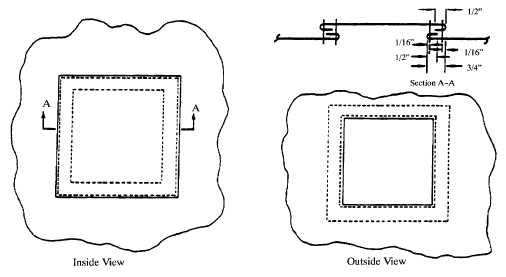TM 10-1670-293-23&P
0012 00
0012 00-8
2. Making a basic patch. A basic patch is used to repair damaged cloth when the affected area is no
closer than 1-inch from a radial seam or lower lateral band. Should a damaged area be closer than 1-
inch to the cited areas, a miscellaneous patch will be made as detailed in paragraph 3., below. There
are three methods that may be used to apply a basic patch; the procedures for performing each method
are outline in paragraphs a. and b., as follows:
NOTE
A basic patch applied to the parachute canopy by sewing will be
square or rectangular in shape. A parachute canopy basic patch,
constructed from adhesive nylon parachute mending cloth, may be
shaped rectangular or triangular, as required.
a. The sewn patch. The primary method of applying a basic patch is by sewing. When using this
method of patching on a parachute canopy, the patch will be applied to the inside of the canopy.
The deployment bag may be patched on either the inside or the outside. (The sewn patch is shown
below.)
Apply a sewn patch as follows:
(1)
Place the reparable item on a repair table, smooth the fabric around the damaged area, and
secure the item to the table with pushpins. Do not pin the damaged area.
(2)
Using an authorized marking aid of contrasting color, mark a square or rectangle around the
area to be patched.
(3)
Cut the damaged fabric area along the lines made in (2), above. Further, cut the fabric
diagonally at each corner to allow a ½-inch foldback in the raw edges.



